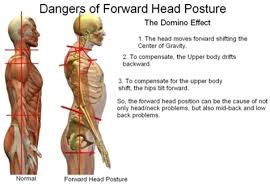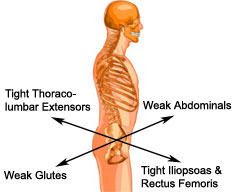Hamstrings: Why We’re Always Stretching Them
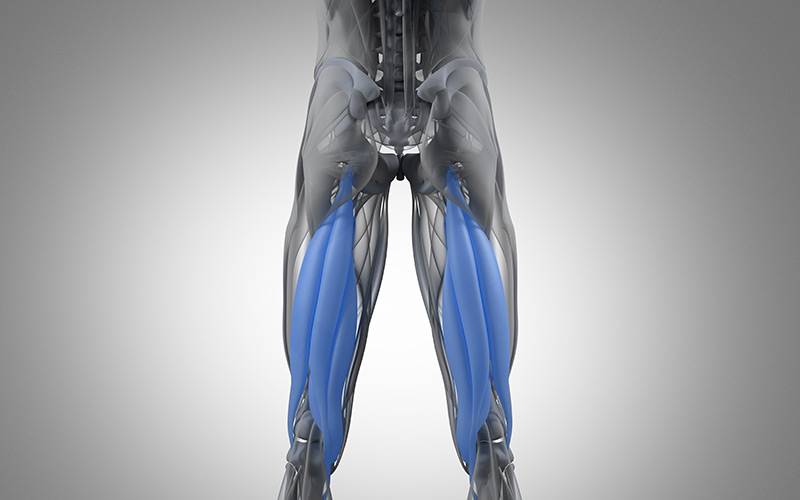
If you’ve ever walked into a Physical Therapy clinic, you’ve probably seen the ubiquitous hamstring stretch. Whether it’s done on one’s back while pulling the leg skyward or bending over trying to touch your toes, it’s one of the most common muscle stretches. So why is this? The reasons are a little more complicated than simply “having short hamstrings.”
The Muscle
A tight muscle is an overactive muscle; meaning it is unable to relax enough to move through its full range of motion. This may occur due to poor biomechanics or lack of movement. The hamstrings, composed of four different muscles, have a primary function to bend the knees and extend the leg backward. One factor in the prevalence of hamstring tightness is sitting. The modern world often demands long hours working at a desk, which has a few biomechanical consequences. One of them is keeping the hamstrings partially contracted for hours on end (specifically: bent at the knees). This means the hamstrings don’t move through their full normal range often enough. Another effect of sitting is that it encourages anterior pelvic tilt, meaning our pelvises tilt forward and our low backs arch. This pelvic tilt pulls on the hamstrings, preventing them from relaxing, even while standing and walking. This over-reliance on hamstrings causes people to engage their gluteals less, cyclically weakening them and leading to further dependence on the hamstrings for movement that is inefficient.
Tight Hamstrings
Tight hamstrings are often implicated in low back pain, one of the most common musculoskeletal complaint- 80% of the population will experience it at some point in their lives. It can be difficult to discern whether tight hamstrings lead to low back pain or vice versa but a good rehabilitation program will focus on both. Tight hamstrings are prone to muscle strain; they account for 29% of sports injuries involving running, jumping, and kicking, not to mention a re-injury rate of 12-31%. Hamstring flexibility has also been implicated in patellar tendinopathy, patellofemoral pain, and sacroiliac pain. Aging further exacerbates the problem as flexibility decreases due to changes such as fascial thickness and stiffness. Incorporating hamstring stretching into an everyday routine is a simple way to reduce the likelihood of injury and improve overall mobility.
There have been many studies on the best way to improve hamstring flexibility. The shortest answer is regular (i.e., daily) static stretching, wherein a muscle stretch is held to a comfortable level of tension for 30 seconds. To increase this benefit, myofascial release, such as foam rolling or soft tissue mobilization by a physical therapist, have been demonstrated to increase stretch tolerance when performed beforehand. Physical therapists also employ neuromuscular techniques, such as Contract-Relax, where a muscle can be induced to relax via neural feedback. Improvements in range of motion can be seen in as little as one week with regular stretching. It’s easy to see why this is such a PT favorite: it’s effective, it helps with a number of related conditions, and above all, it’s easy to do just about anywhere.
References
Bandy, W. D., & Irion, J. M. (1994). The Effect of Time on Static Stretch on the Flexibility of the Hamstring Muscles. Physical Therapy,74(9), 845-850.
Freburger, J. K., Holmes, G. M., Agans, R. P., Jackman, A. M., Darter, J. D., Wallace, A. S., . . . Carey, T. S. (2009). The Rising Prevalence of Chronic Low Back Pain. Archives of Internal Medicine,169(3), 251. doi:10.1001/archinternmed.2008.543
Junker, D. H., & Stöggl, T. L. (2015). The Foam Roll as a Tool to Improve Hamstring Flexibility. Journal of Strength and Conditioning Research,29(12), 3480-3485.
Medeiros, D. M., Cini, A., Sbruzzi, G., & Lima, C. S. (2016). Influence of static stretching on hamstring flexibility in healthy young adults: Systematic review and meta-analysis. Physiotherapy Theory and Practice,32(6), 438-445.
Mohr, A. R., Long, B. C., & Goad, C. L. (2014). Effect of Foam Rolling and Static Stretching on Passive Hip-Flexion Range of Motion. Journal of Sport Rehabilitation,23(4), 296-299.
Wan, X., Qu, F., Garrett, W. E., Liu, H., & Yu, B. (2017). Relationships among hamstring muscle optimal length and hamstring flexibility and strength. Journal of Sport and Health Science,6(3), 275-282.


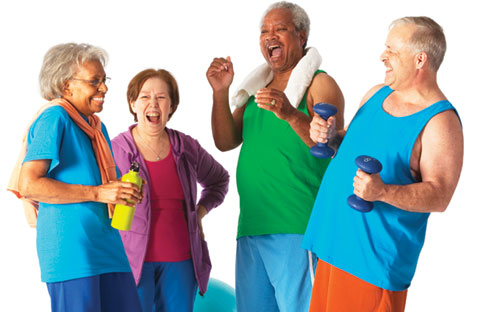


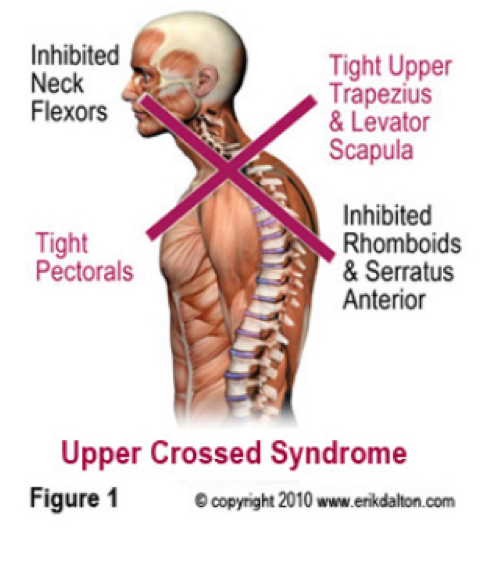 One primary cause of muscle imbalances is poor posture. People are working longer hours, staring at their computer screens for hours and hours. This causes muscle imbalances which can lead to neck pain. One of the most common types of muscle imbalances in the neck and shoulders is called “upper crossed syndrome.” This is where you have inhibited or weakness in the deep neck flexors in the front and rhomboids/lower traps in the back in combination with tightness of the upper traps/levator scapula and pectorals.
One primary cause of muscle imbalances is poor posture. People are working longer hours, staring at their computer screens for hours and hours. This causes muscle imbalances which can lead to neck pain. One of the most common types of muscle imbalances in the neck and shoulders is called “upper crossed syndrome.” This is where you have inhibited or weakness in the deep neck flexors in the front and rhomboids/lower traps in the back in combination with tightness of the upper traps/levator scapula and pectorals.